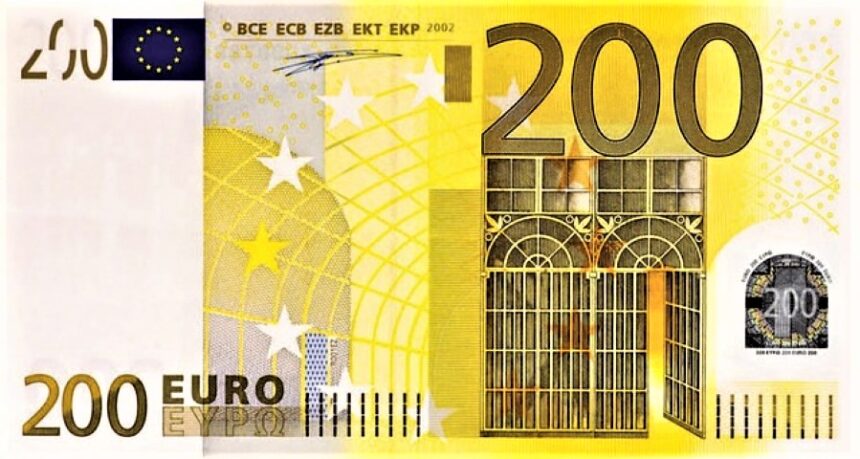EURUSD pair Triggered by Eurozone PMI Data.
EURUSD currency pair fell sharply on Friday, reaching near 1.0470 in the European session, following the release of preliminary Purchasing Managers Index (PMI) data for February. The data, compiled by S&P Global on behalf of Hamburg Commercial Bank (HCOB), provided a mixed picture of the Eurozone economy, leading to increased volatility in the currency markets.
The HCOB report indicated that the Eurozone Composite PMI remained stable at 50.2, slightly below market expectations of 50.5. While this suggests that the economy is experiencing marginal expansion, the slower-than-expected growth rate raised concerns among investors.
Further analysis of the PMI components revealed that the manufacturing sector continues to contract. However, the pace of decline in manufacturing activity was less severe than anticipated, offering some relief to market participants. On the other hand, the services sector, which had been a primary driver of growth, expanded at a weaker pace compared to the previous month, adding to concerns about economic resilience.
Insights from HCOB Economist Dr. Cyrus de la Rubia
Dr. Cyrus de la Rubia, Chief Economist at HCOB, provided his insights into the data, highlighting the fragile nature of economic growth in the Eurozone. He noted, “Economic output in the Eurozone is barely moving at all. The somewhat milder recession in the manufacturing sector is only just being overcompensated by the barely noticeable growth in the services sector.”
He further emphasized that while there is optimism surrounding potential economic policies in Germany after the upcoming elections, concerns persist regarding instability in France and the uncertain impact of U.S. trade policies. Dr. de la Rubia remarked, “There is certainly hope for a German government that will be able to act after the elections, which should also provide a positive impetus for the Eurozone as a whole. However, this is offset by a relatively unstable situation in France and a U.S. customs policy that is spreading uncertainty. These figures, therefore, do not yet point to a recovery in the Eurozone.”
Eurozone Impact on ECB Monetary Policy
The sluggish growth in the Eurozone PMI data is unlikely to ease concerns at the European Central Bank (ECB). Policymakers at the ECB have been monitoring economic conditions closely, particularly as inflationary pressures and sluggish growth continue to shape monetary policy decisions. The latest PMI figures reinforce expectations that the ECB will proceed with rate cuts in the coming months to stimulate economic activity.
Market participants have already priced in three additional rate cuts by the ECB this year. The central bank recently reduced its Deposit Facility Rate by 25 basis points to 2.75%, indicating a shift towards a more accommodative stance. The new data strengthens the case for further easing as policymakers seek to navigate the complex economic environment.
US PMI Data in Focus Amid EURUSD Volatility
In the upcoming trading sessions, investor attention will shift to the flash United States (U.S.) S&P Global PMI data for February, scheduled for release at 14:45 GMT. The performance of the U.S. economy remains a key determinant of EUR/USD movements, and any significant surprises in the PMI figures could influence market sentiment.
Market Outlook: EURUSD Faces Pressure as US Dollar Strengthens
The EURUSD pair is struggling to maintain Thursday’s gains near the critical psychological level of 1.0500. This comes as the U.S. Dollar (USD) continues to regain ground, with the U.S. Dollar Index (DXY) climbing from 106.30 to 106.65.
On Thursday, the Greenback faced notable selling pressure due to improved market sentiment. However, investors are now reassessing the outlook for U.S. trade and economic policies under President Donald Trump’s potential return to office.
Market participants initially feared that Trump’s tariff policies would introduce significant economic disruptions. However, recent developments suggest that the impact may not be as severe as previously anticipated.
Developments in US Trade Policy and Its Impact on EURUSD
President Trump’s trade policies have been a major topic of discussion in global markets. So far, his administration has imposed:
25% tariffs on steel and aluminum
10% tariffs on all imports from China
Threats of 25% tariffs on automobiles, semiconductors, and pharmaceuticals, expected by April
Initially, the market braced for aggressive tariff measures soon after Trump’s return to the White House. However, recent reports indicate that his administration is open to negotiations, reducing the immediate risk of major disruptions to global trade.
The European Union (EU) trade chief, Maros Sefcovic, stated that discussions with U.S. trade officials have shown some willingness to reach mutually beneficial agreements. “The U.S. has shown some willingness to mutually reduce tariffs,” Sefcovic noted, emphasizing that his top priority is to prevent economic pain for both the EU and the U.S.
This shift in tone has provided some relief to market participants, who were previously concerned about escalating trade tensions. The possibility of negotiated settlements and reduced tariff risks could help stabilize the EUR/USD pair in the near term.
Geopolitical Developments: Russia-Ukraine Truce Talks Weigh on USD
Apart from trade policy, another significant factor influencing the U.S. Dollar is the ongoing discussions regarding a potential truce in the Russia-Ukraine conflict. Reports indicate that President Trump has agreed to hold further negotiations with Russia, Ukraine, and European leaders in an effort to bring an end to the war.
On Thursday, U.S. Treasury Secretary Scott Bessent emphasized the administration’s commitment to resolving the conflict swiftly. “President Trump is committed to ending the war quickly,” he stated, adding that Russia may receive some sanctions relief as an incentive for engaging in peace talks.
The prospect of de-escalation in Eastern Europe has contributed to a slight weakening of the U.S. Dollar. Investors often seek safe-haven assets such as the Greenback during geopolitical uncertainties, and a potential resolution to the conflict could reduce demand for USD as a safe-haven currency.
Federal Reserve’s Stance on Monetary Policy
While trade policy and geopolitics remain critical factors, monetary policy decisions by the Federal Reserve (Fed) also play a significant role in shaping USD strength.
The Fed has maintained a cautious approach, emphasizing its commitment to controlling inflation. Given the potential economic effects of Trump’s tariff agenda and fiscal policies, Fed officials remain inclined towards a restrictive monetary stance.
Market participants will be closely watching Fed Chair Jerome Powell’s statements in the coming weeks for any signals regarding future interest rate decisions. Any hawkish commentary could bolster the U.S. Dollar further, adding additional pressure on the EURUSD pair.
Conclusion: EURUSD Outlook Remains Uncertain
The EURUSD currency pair remains under pressure as multiple factors contribute to market uncertainty. The weaker-than-expected Eurozone PMI data has dampened investor confidence, reinforcing expectations of further rate cuts by the ECB. At the same time, U.S. economic developments, including trade policy shifts and Federal Reserve actions, continue to influence market sentiment.
Looking ahead, traders will focus on the upcoming U.S. PMI data release for further cues on economic trends. Additionally, any new developments in trade negotiations, geopolitical tensions, or monetary policy decisions could significantly impact EURUSD movements in the coming days.
While the short-term outlook remains uncertain, traders and investors will need to closely monitor these key factors to navigate the evolving forex market landscape.









